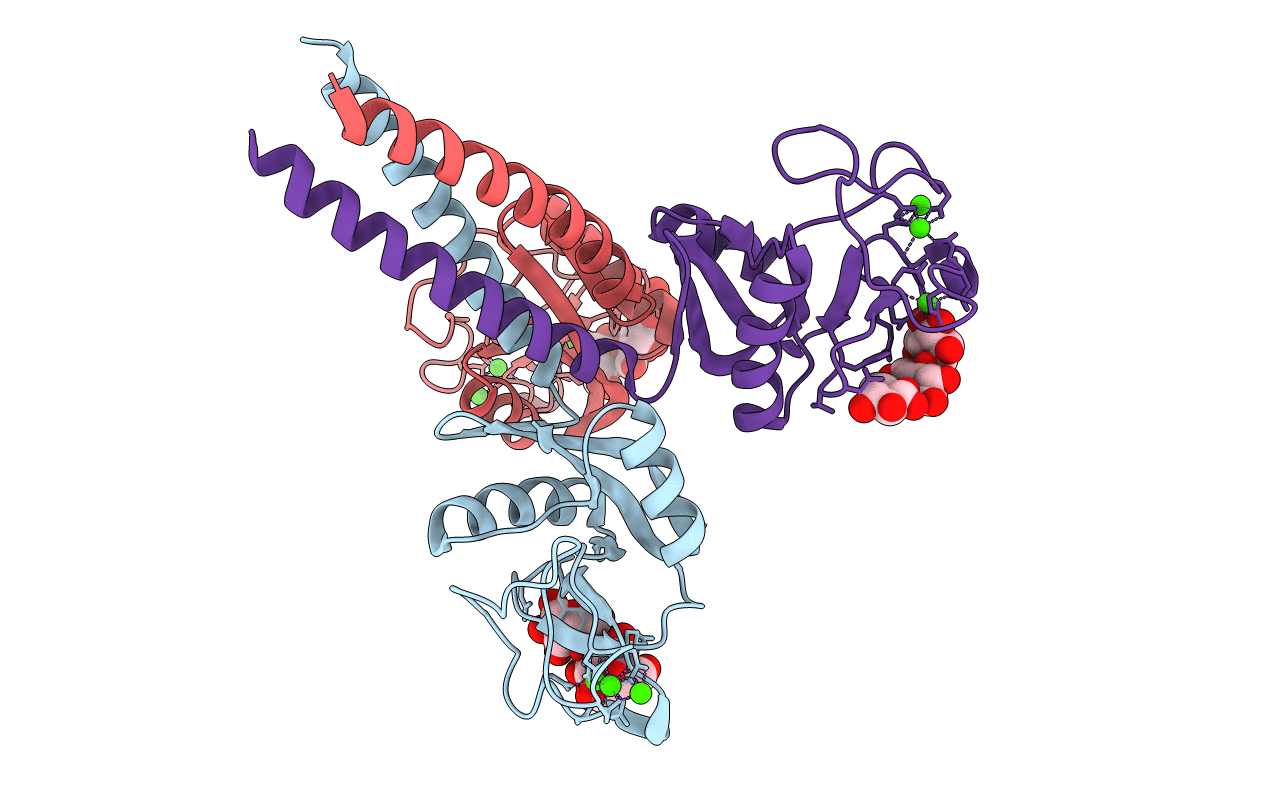
Deposition Date
2006-03-24
Release Date
2006-05-02
Last Version Date
2024-10-30
Entry Detail
PDB ID:
2GGU
Keywords:
Title:
crystal structure of the trimeric neck and carbohydrate recognition domain of human surfactant protein D in complex with maltotriose
Biological Source:
Source Organism:
Homo sapiens (Taxon ID: 9606)
Host Organism:
Method Details:
Experimental Method:
Resolution:
1.90 Å
R-Value Free:
0.24
R-Value Work:
0.22
R-Value Observed:
0.22
Space Group:
P 1 21 1


